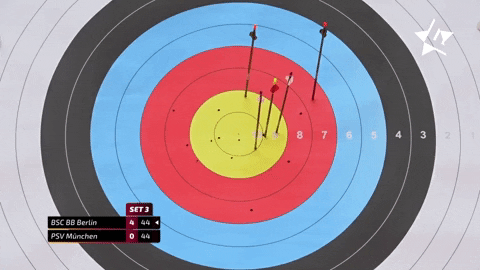I love trading!
And I know you do, too.
But let me tell you…if you think it’s all about finding the next hot idea, and you don’t put in the time to keep learning, YOU’RE DONE!
That’s why I want to take a few minutes today to teach you a valuable lesson about how I customize my trading ideas for members, to teach them when the broader stock market is as weak as it has been so far in April.
To begin, let’s look at the specialized charts I use to help steer my members through the market’s never-ending swings.
The bands on this chart of the QQQ are called Keltner bands.
Different from Bollinger Bands, which measure standard deviations from a central moving average, these Keltner bands measure a security’s Average True Range (ATR) from a moving average.
I set these bands to 1X, 2X, and 3X ATR, with the idea being that 1X – 2X ATR moves are most common, and anything beyond a 2X ATR move is extreme and usually results in a move back to the average (also known as mean reversion).
I’m starting with this lesson because the chart of the QQQs above shows where I began warning members of the market’s vulnerability on the day the market topped on 03/29.
Here’s an actual snippet from my morning commentary that day:
“The markets are green across the board today as traders on Wall St. start to have more optimism in the markets as a result of the peace talks between Russia and Ukraine. But as the QQQs might stall out here, I’m looking to keep a close eye on how the bears reach near the pivot highs at $370.”
Here are some things I do when the market has become vulnerable:
- Reduce portfolio risk by lowering the amount of “beta” in the trade ideas I am monitoring.
- Look for trades that are less sensitive to the major indexes.
Let’s take a closer look at the concept of managing portfolio beta.
Reducing my portfolio’s beta is a great way I diversify
When a trader works to diversify his or her portfolio, essentially the goal is to reduce portfolio volatility.
This is where a portfolio’s beta comes into play.
When we measure beta, we’re measuring a stock’s sensitivity to changes in the overall market.
When we’re talking about the overall market, we’re referring to a benchmark index such as the S&P 500.
Here’s a few examples:
- If a stock has a beta of 1.0 it has the exact same volatility as the benchmark, which is to say it moves exactly like the benchmark.
- If a stock has a higher beta than 1.0 it trades with more volatility than the benchmark.
- If a stock has a beta less than 1.0 it trades with more stability than the benchmark (i.e., it is less volatile).
- Therefore, if a stock has a beta of 1.5 it is 50% more volatile than the benchmark. In other words, if the S&P 500 happened to fall 10% the stock would fall 15%.
Finding a stock’s beta is easy
Many charting services these days allow traders to place Beta as an indicator on their price charts.
In addition, many online brokers and data services provide beta as part of their stock statistics offering.
Below is just one example of a very popular and free method for finding a stock’s beta.
This first image shows that when you simply search “AAPL beta” using Google, the first item on the results page is a Yahoo Finance summary that includes the stock’s beta.
One thing that is important to understand is that there is not a consistent method for calculating beta, so the number may differ a bit between providers.
Beta is commonly calculated by comparing a stock’s monthly closing prices to those of the S&P 500. In the Yahoo Finance version shown above, beta was calculated by using 36 months of closing price data.
This might compare to your online broker that may use 24 or 48 months of data.
In the end, though, the beta figures shouldn’t vary too wildly.
Take the time to determine your portfolio’s beta
Since beta figures are readily available, it is easy to determine the beta of your portfolio.
The process of determining your portfolio’s beta is as follows:
First, determine the value of each stock you own in your portfolio. This is done by multiplying the number of shares you own by the share price of the stock.
Next, determine the percentage each stock represents of your entire account.
Now, take each stock’s percentage weighting and multiply it by the stock’s beta, which has been provided to you by either our online broker account or charting services. For example, if Google makes up 25% of your portfolio and has a beta of 1.36, it has a weighted beta of 0.34.
Finally, add all of the weighted beta figures.
The end result will look like this:
Based on this example, we can see that the sample portfolio has a beta of 1.119, making it more volatile than the broader market.
It’s easy to scan for beta nowadays
Luckily, the competition between online screening/scanning services has become so hot in recent years that traders can easily include beta in our scanning process.
For instance, this next image shows how easy it is to include beta as part of the search criteria when using the free version of Finviz.
As the image shows, when the “All” tab is selected, you’re able to see all of the criteria that can be included in your search for free.
Then, when you select the “Beta” pulldown menu in the bottom left of the screen, be sure to choose any selection that is less than 1.0 in order to find trade ideas that are less sensitive to pullbacks than the S&P 500.
In the end, folks, successful trading is all about following a PROCESS. I hope you’ll join me to learn more.
To YOUR Success!




